This article has been reviewed according to Science X's editorial process and policies. Editors have highlighted the following attributes while ensuring the content's credibility:
fact-checked
trusted source
proofread
Blockchain-based vehicular edge computing networks: The communication perspective
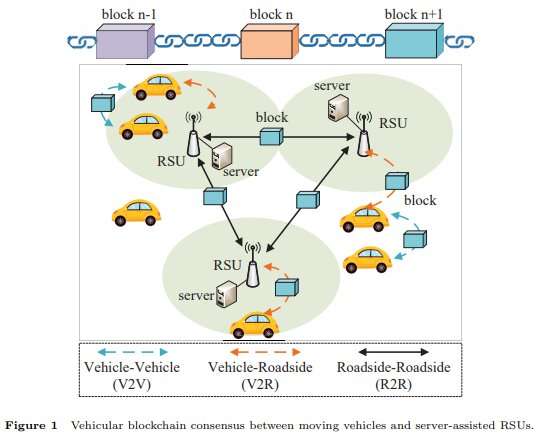
In recent years, the blockchain-based vehicle edge computing (VEC) network enables the computation task of vehicular networks to be offloaded to multiple distributed edge computing nodes deployed in roadside units (RSU), while realizing reliable and decentralized information sharing among RSUs. In the next generation of vehicular networks, the computing and storage capacity of vehicles will be improved.
Therefore, it is highly feasible to deploy blockchain nodes to vehicles and RSUs at the same time. However, there are obvious differences between vehicle nodes and RSU nodes in terms of mobility and communication coverage. The communication mode between vehicles and RSUs will have an impact on the specific mode of block propagation, which needs further exploration.
In addition, the consensus mechanism adopted by the existing blockchain-based VEC cannot fully exert the communication ability of all nodes, resulting in low consensus efficiency, which needs to be improved.
-
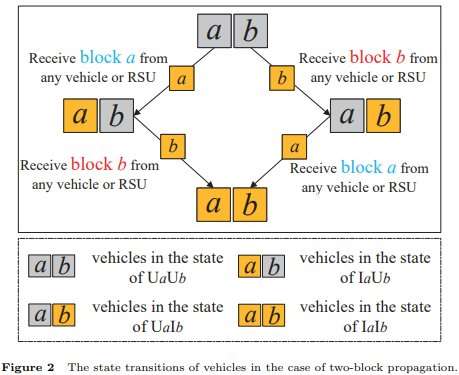
State transitions of vehicles in the case of two-block propagation. Credit: Science China Press -
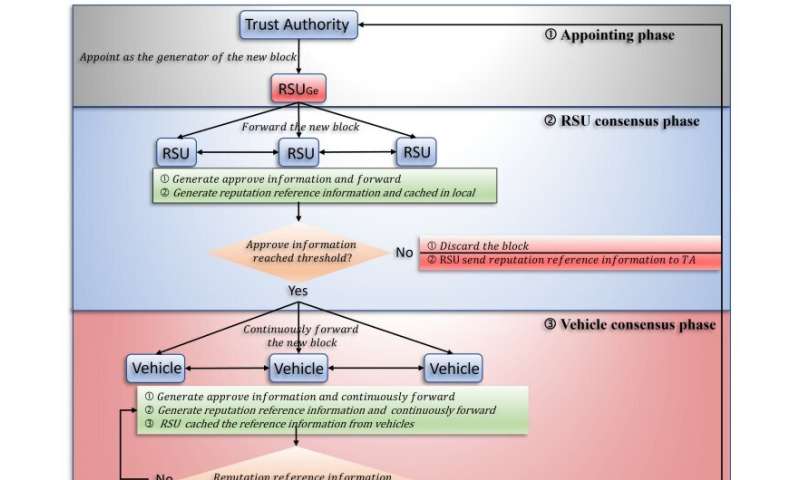
Specific process of the improved consensus mechanism. Credit: Science China Press
To study the improvements in the consensus process when blockchain nodes are deployed on vehicles and RSUs, a paper published in Science China Information Sciences researches the dynamic process of block propagating between RSUs and vehicles. Aimed at the implementation of blockchain nodes, a reputation-based consensus mechanism is proposed as well. By comparing the numerical and simulation results, the feasibility of the proposed consensus mechanism is verified.
The main contributions of the paper are as follows:
- The dynamic process of block propagating between vehicles and RSUs is analyzed.
- The dynamic equations of the single-block propagation for two specific conditions are presented and further discussed. The dynamic state transitions of vehicles in the multiblock propagation are illustrated.
- We design a reputation-based consensus mechanism, which separates the consensus process between RSUs and vehicles and requires all nodes to participate in the forwarding process of the new block.
The dynamic equations and consensus mechanism proposed in the paper are analyzed and simulated in a 12km×12km square region where 0∼50 RSU nodes and 200 vehicle nodes are contained. RSU nodes are evenly distributed in the region, while the movements of vehicle nodes follow the random direction mobility model.
-
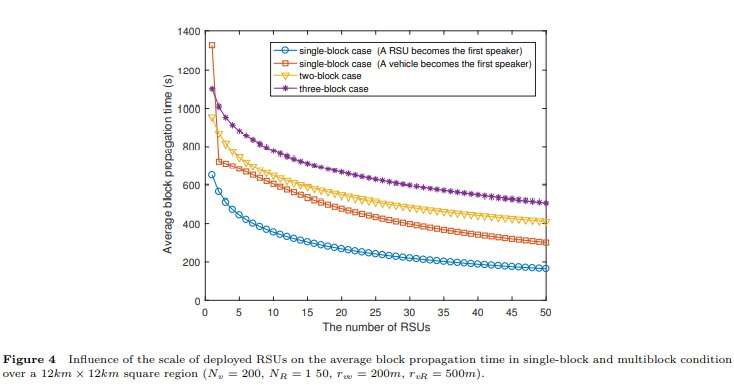
Influence of the scale of deployed RSUs on the average block propagation time in single-block and multiblock conditions over a 12 km × 12 km square region (Nv = 200, NR = 1–50, rvv = 200 m, rvR = 500 m). Credit: Science China Press -
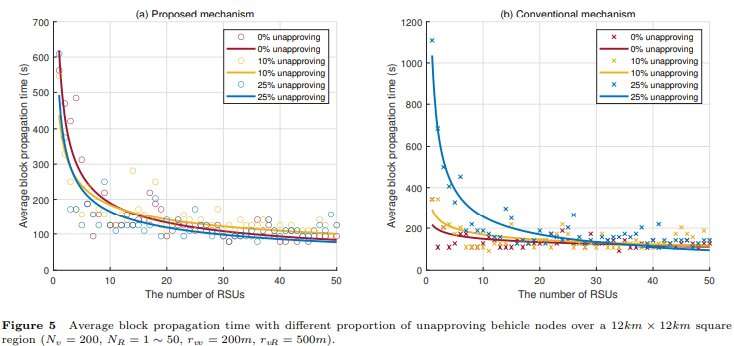
Average block propagation time with different proportions of unapproving vehicle nodes over a 12 km × 12 km squareregion (Nv = 200, NR = 1–50, rvv = 200 m, and rvR = 500 m). Credit: Science China Press
The results showed that the block propagation time decreases as the number of RSU increases, and the proposed reputation-based consensus mechanism greatly reduces the consensus time. By deriving the dynamic equations of a single-block and multi-block propagation process, we defined multi-block propagation as a blockchain forking competitive propagation.
More information: Lin He et al, Blockchain-based Vehicular Edge Computing Networks: The Communication Perspective, Science China Information Sciences (2023). DOI: 10.1007/s11432-022-3658-7


















